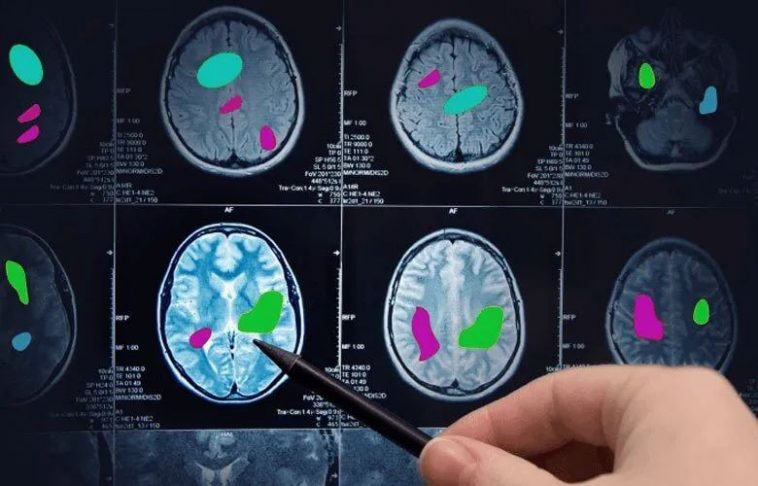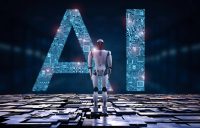Biotechnology uses modern technology to use biological processes, organisms, cells, molecules and systems to create new products that benefit people and the planet. Laboratory research and development through bioinformatics, exploration and extraction of biomass through biochemical engineering, and development of high-value products. Biotechnology operates silently in various fields such as agriculture, medical, animal, industrial and others.
White biotechnology refers to the use of living organisms to manufacture products through chemical processes, mainly used in the industrial field, and it can solve the energy crisis by producing biofuels, such as for vehicles or heating.
picture
Every business organization working in the field of biotechnology maintains a large amount of data in databases. This data must also be filtered and analyzed to be valid and applicable. Operations such as drug manufacturing, chemical analysis, enzymatic research, and other biological processes should be supported by computerized tools to achieve high performance and accuracy, and help reduce human error.
Artificial intelligence (AI) is one of the most helpful technologies to help biotechnology manage biological processes, drug production, supply chains and data processing.
It interacts with data obtained through scientific literature and clinical data trials. AI can also manage difficult-to-comparison clinical trial datasets and enable virtual screening and analysis of large volumes of data. As such, it reduces the cost of clinical trials and leads to discovery and insight into the workings of biotechnology in any field.
More predictable data makes it easier to build workflows and operations, improves the speed of performance and program accuracy, and enables more effective decision-making. 79% believe that AI technology affects workflow and is critical to productivity.
All of these results in a more cost-effective solution. Over the past three years, AI-assisted revenue has grown by an estimated $1.2 trillion.
Advantages of using artificial intelligence in biotechnology
Artificial intelligence is used in a variety of fields, and while the technology’s capabilities, such as classifying data and making predictive analytics, are beneficial to any field of science, it is particularly prominent in healthcare.
Manage and analyze data
Scientific data is constantly expanding and must be arranged in a meaningful way. The process is complex and time-consuming: scientists have to go through repetitive and onerous tasks that must be performed with extreme concentration.
The data they use is an important part of the research process, and when it fails, it can lead to high costs and energy losses. Furthermore, many kinds of research do not yield practical solutions because they cannot be translated into human language. Artificial intelligence programs help automate data maintenance and analysis. Open-source platforms powered by artificial intelligence help reduce repetitive, manual and time-consuming tasks laboratory workers must perform, allowing them to focus on innovation-driven operations.
Genetic modification, chemical composition, pharmacological studies and other key informatics tasks are thoroughly examined for more reliable results in less time. Effective data maintenance is critical to every scientific sector. However, the most significant advantage of AI is its ability to organize and systematize data into predictable results.
Driving innovation in healthcare
Over the past decade, we have faced an urgent need to innovate in the manufacture and application of pharmaceuticals, industrial chemicals, food-grade chemicals, and other biochemical-related raw materials.
Artificial intelligence in biotechnology is essential to facilitate innovation throughout the life cycle of a drug or compound, as well as in the laboratory.
It helps find the right combination of chemicals by calculating the permutations and combinations of different compounds without the need for manual lab testing. Furthermore, cloud computing enables more efficient distribution of raw materials used in biotechnology.
In 2021, research lab DeepMind uses artificial intelligence to develop the most comprehensive map of human proteins (Extended reading: Proteins perform a variety of tasks in the human organism—from building tissues to defeating disease. Their molecular structure determines their purpose and can be repeated thousands of times – knowing how a protein folds helps understand its function, so scientists can figure out myriad biological processes, like how the human body works, or create new treatments and medicines.
These platforms provide scientists around the world with access to data about discoveries.
AI tools help decode the data to reveal the mechanisms of specific diseases in different regions and help build analytical models that fit their geographic locations. Before the use of artificial intelligence, time-consuming and expensive experiments were required to determine the structure of proteins. Now, through the Protein Data Bank, scientists have free access to some 180,000 protein structures made by the program.
Machine learning helps diagnoses more accurately, using actual findings to enhance diagnostic tests. The more tests performed, the more accurate the results generated.
AI is a great tool to enhance electronic health records with evidence-based medicine and clinical decision support systems.
Artificial intelligence is also widely used in fields such as genetic manipulation, radiology, customized medicine, and drug management. For example, according to current research, AI has improved the accuracy and efficiency of breast cancer screening compared to standard breast radiologists. Additionally, another study claims that lung cancer can be detected faster by neural networks than by trained radiologists. Another application of AI is more accurate detection of disease through X-rays, Magnetic Resonance Imaging (MRI), CT scans through AI-driven software.
picture
Reduce research time
Due to globalization, new diseases spread rapidly across countries. For example with COVID-2019, biotechnology must accelerate the production of necessary drugs and vaccines to combat these diseases.
Artificial intelligence and machine learning maintain the process of detecting the appropriate compounds, assisting in their synthesis in the laboratory, helping analyze the validity of the data, and supplying them to the market. The application of artificial intelligence in the field of biotechnology has shortened the time for operational performance from 5-10 years to 2-3 years.
increase agricultural production
Biotechnology is the key to greater harvests of genetically engineered crops. Artificial intelligence-based technologies are increasingly useful in studying crop characteristics, comparing quality and predicting actual yields. Agricultural biotechnology also uses robots (a branch of artificial intelligence) to perform manufacturing, gathering and other critical tasks.
AI helps plan future patterns of material flow by combining data such as weather forecasts, agricultural characteristics, availability of seeds, compost and chemicals.
Artificial Intelligence in Industrial Biotechnology
IoT and artificial intelligence are widely used in the production of vehicles, fuels, fibers and chemicals. AI analyzes the data collected by the IoT, and by predicting the results, turns it into valuable data that can be used to improve the production process and product quality.
Computer simulations and artificial intelligence suggest the expected molecular design. The strains are generated through robotics and machine learning to test the accuracy of the molecules needed for development.
picture
Although this is only the beginning of the application of artificial intelligence in the field of biotechnology, many improvements are already available to various fields. In addition, the continuous development of AI software in the biotech space shows that it can be used in multiple processes, operations and tactics to gain a competitive advantage.
Not only does it drive innovation, but it is a valuable tool for more accurate testing and predicting outcomes in the lab, without requiring the actual performance of the experiment, thereby reducing costs. In addition to finding future human necessities in healthcare and agriculture, forecasting potential losses, and making predictions for companies that should direct their resources to more efficient production and supply.




GIPHY App Key not set. Please check settings